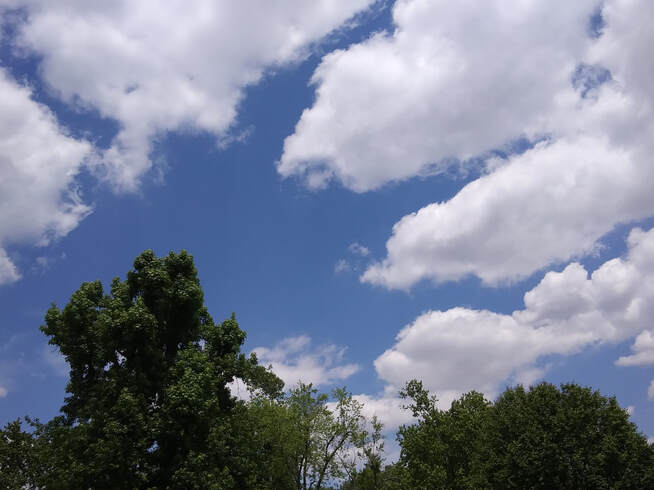KiTE's Mission and Founder's Vision
Hello. My name is Catherine. My email address is cv@KindnessAlert.co (not .com). As the founder of KiTE: Kindness Training and Education LLC, I am experimenting with ways to cultivate kindness, to create a culture of kindness. I am a student, too, still learning to be kind. In recent years, I have come to appreciate divine blessing, that God's lovingkindness guides and sustains all creation.
About ten years ago, kindness captured my imagination. I became curious about kindness and the lack of kindness, about mindfulness and the lack of awareness in daily life. I wanted to explore the synchronicity between practicing mindfulness and becoming kind-minded. I saw a need for mindful kindness, for treating others as they would want to be treated.

Why cultivate kindness? Neuroscience research has revealed how we can establish new neural pathways and improve our health and well-being. Early research focused on the amygdala's stress response, the fight-or-flight response that scans the horizon for threats to our survival. As such, it has been characterized as having a negativity bias. Consider this: We have other biological systems and survival mechanisms that monitor our well-being, including thirst, hunger, and heart rate to name a few. We do not usually characterize these as having a negativity bias. Rather, we appreciate their role in alerting us to metabolic and other biological changes.
I propose that we appreciate all our monitoring systems as a force for good and train them accordingly. With no conscious intervention, we grow up with a threat alert system that has a mind of its own and reacts as a first responder. Given the evolution of the human brain, the amygdala can focus more on being an internal radar system and less on being the one in charge except under special circumstances. With intention, we can manage the monitoring and minimize the reactivity. When we process the information coming from our internal systems while remaining calm and kind, the prefrontal cortex is free to guide our choices. With training and practice, an automatic reaction can be the appropriate choice in certain situations. Without brain training, a knee-jerk reaction can lead to tragic accidents and senseless deaths.
We have the capacity to love and connect, to cooperate and contribute. In a nurturing, caring, loving environment, these qualities naturally emerge. The conscious intention to cultivate a kind state of mind, to be anchored in kindness, creates new possibilities. The proposed acronym is IKANITAN, for an Internal Kind Attention Neuro Network managing our Internal Threat Alert Neuro Network. Can you see the possibilities? Your feedback is welcome.
Aided by meditation, reflection, and mindfulness, "programming" IKANITAN would require these steps:
In short, embrace life in the key of kindness. We can do this. Love trumps fear and kindness counts. Cultivate a kind mind and help create a culture of kindness. Commit to kindness. Be the blessing, be the light. Pause, breathe, choose. Choose kindness, mindful kindness.
I propose that we appreciate all our monitoring systems as a force for good and train them accordingly. With no conscious intervention, we grow up with a threat alert system that has a mind of its own and reacts as a first responder. Given the evolution of the human brain, the amygdala can focus more on being an internal radar system and less on being the one in charge except under special circumstances. With intention, we can manage the monitoring and minimize the reactivity. When we process the information coming from our internal systems while remaining calm and kind, the prefrontal cortex is free to guide our choices. With training and practice, an automatic reaction can be the appropriate choice in certain situations. Without brain training, a knee-jerk reaction can lead to tragic accidents and senseless deaths.
We have the capacity to love and connect, to cooperate and contribute. In a nurturing, caring, loving environment, these qualities naturally emerge. The conscious intention to cultivate a kind state of mind, to be anchored in kindness, creates new possibilities. The proposed acronym is IKANITAN, for an Internal Kind Attention Neuro Network managing our Internal Threat Alert Neuro Network. Can you see the possibilities? Your feedback is welcome.
Aided by meditation, reflection, and mindfulness, "programming" IKANITAN would require these steps:
- Repeat and practice the intentions that help cultivate a kind state of mind.
- Identify both legitimate and groundless fears. Choose what to watch for, what to let go of. As needed, seek professional help to resolve anxiety issues, regrets, trauma, etc.
- Tune in to our internal regulatory and monitoring systems. Appreciate their original function.
- Through awareness and intention, build an internal communication network and collaborative community. Get all parts of the brain and body on the same page, working together for us to thrive.
- Repurpose our radar, the threat alert system, to scan for the legitimate threats, in ourselves, our immediate environment, and the larger world we live in.
In short, embrace life in the key of kindness. We can do this. Love trumps fear and kindness counts. Cultivate a kind mind and help create a culture of kindness. Commit to kindness. Be the blessing, be the light. Pause, breathe, choose. Choose kindness, mindful kindness.

The advances in neuroscience and other discoveries have implications for how we can reach our full humanity and why it matters. How do we become our best selves as individuals and social beings? How do we create sustainable systems? Choosing kindness can increase the levels of serotonin, oxytocin, and dopamine in our brains. (Choosing humor can do this, too.) These positive effects on our health and well-being affect how we treat ourselves, interact with others, and connect with creation. How cosmic is that? Have you hugged a tree today?

What happens when we move beyond pursuing random acts of kindness and referring to the brain's threat monitoring system as a negativity bias? What happens when we take responsibility for creating an internal awareness system anchored in mindful kindness? With a kindness alert or kind attention system managing our threat alert system, we have a better chance of reaching our full potential. Courageous leaders and contemplative mystics have demonstrated that we are one, that we can access the unconditional, eternal, and infinite capacity to love that is our birthright as human beings. Indeed, perhaps it is our purpose on this planet. By cultivating kindness and creating a culture of kindness, we can participate in this revolutionary evolutionary process.
With determination and collaboration, we made it to the moon and completed the Human Genome Project. Now would be a good time to tap into the full potential of kindness. Is this my moon shot? No, it's a Crab Nebula shot, 6,500 light-years away. This can be your Crab Nebula shot, too. Life in the key of kindness is possible. We can change the world one mind, one heart at a time. I invite you to make that cosmic connection. Thank you and God bless. Namaste.
Update, July 2021: I have been drawn more and more toward a recognition of intelligent design in the creation of the universe and divine love, divine intervention, and divine mercy in it's maintenance and evolution. Reading this book reinforced my thinking---Return of the God Hypothesis: Three Scientific Discoveries That Reveal the Mind Behind the Universe by Stephen C. Meyer, c.2021.
What is God's hope for humanity? How do we say "Yes" to God's hope for humanity? I believe we are called to embrace, embody, and extend God's lovingkindness, to trust in God's grace and goodness, to trust in divine love, divine intervention, and divine mercy. Day by day, we are called to journey toward becoming kind-minded in a crazy-making world; to commit to kindness, mindful kindness, to cultivate a kind mind, open heart, and joyful, resilient, vibrant spirit. Take care, God bless, and Namaste.
Be the blessing. Be the light.
Choose kindness, mindful kindness.
Choose kindness, mindful kindness.
Permission to use photos: CV's Scared Selfie, G hugging tree, and two NASA images.
(1) Crab Nebula M1, Release ID: STSci-2005-37. NASA, ESA, J. Hester & A Loll (Arizona State University)
and (2) Kepler 62f with 62e Morning Star image credit: NASA Ames/JPL-Caltech/Tim Pyle
(1) Crab Nebula M1, Release ID: STSci-2005-37. NASA, ESA, J. Hester & A Loll (Arizona State University)
and (2) Kepler 62f with 62e Morning Star image credit: NASA Ames/JPL-Caltech/Tim Pyle

